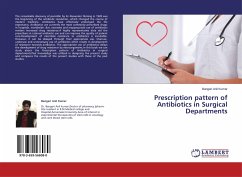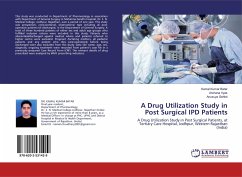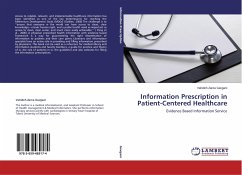The remarkable discovery of penicillin by Sir Alexander Fleming in 1928 was the beginning of the antibiotic revolution, which changed the course of modern medicine. Antibiotics have effectively prolonged the life expectancy. Antibiotics are currently the most commonly prescribed drugs in hospitals, worldwide. But, excessive and inappropriate use of antibiotics renders increased drug resistance.A highly representative data aid the prescribers in rational antibiotic use and can improve the quality of patient care.Development of microbial resistance to antibiotics is inevitable. However, it can be delayed through their appropriate use. Overuse, underuse and unnecessary use of antibiotics often results in development of resistance towards antibiotics. The appropriate use of antibiotics delays the development of drug resistance by microorganisms.In this book we can study about the Prescription pattern of Antibiotics in surgical departments.Past knowledge was utilized in designing the present study and compares the results of the present studies with those of the past studies.








